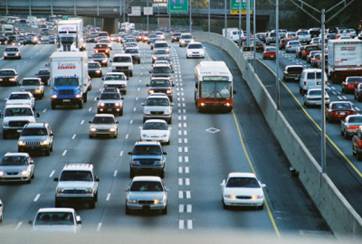
HOV Lane - Atlanta
A process required by the Clean Air Act (CAA) Section 176(c) which establishes the framework for improving air quality to protect public health and the environment. The goal of transportation conformity is to ensure that Federal Highway Administration (FHWA) and Federal Transit Administration (FTA) funding and approvals are given to highway and transit activities that are consistent with air quality goals.
The CAA requires that metropolitan transportation plans, metropolitan transportation improvement programs (TIPs) and Federal projects conform to the purpose of the State Implementation Plan (SIP). Conformity to a SIP means that such activities will not cause or contribute to any new violations of the National Ambient Air Quality Standards (NAAQS); increase the frequency or severity of NAAQS violations; or delay timely attainment of the NAAQS or any required interim milestone.
A Federal standard that establishes an air quality concentration to protect public health and welfare. The NAAQS are set for six principal pollutants, also called criteria pollutants.
Six Criteria Pollutants
The link between air quality and transportation planning.
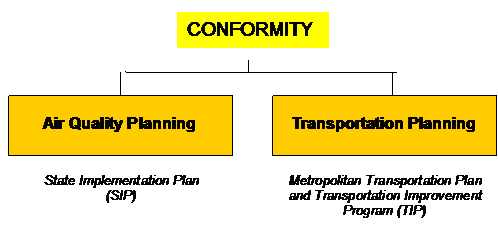
Air pollution comes from a variety of sources. Transportation conformity only addresses air pollution from on-road mobile sources which include emissions created by cars, trucks, buses, commuter rail, and motorcycles.
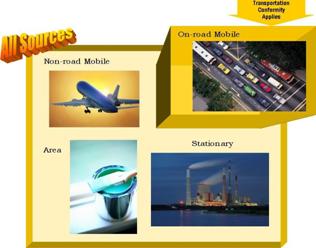
All nonattainment and maintenance areas for ozone (O3), particulate matter (PM10 and PM2.5), nitrogen dioxide (NO2), and carbon monoxide (CO), and their appropriate precursors (precursor pollutants are those pollutants which contribute to the formation of other pollutants).
| Direct Emissions | NOx | VOC | Ammonia (NH3) | Sulfur Dioxide (SO2) | |
|---|---|---|---|---|---|
| Ozone (O3) | X | X | |||
| PM10 | X | X | X | ||
| PM2.5 | X | X | X | X | X |
| NO2 | X | ||||
| CO | X |
Precursor Emissions
* Not all precursors are required to be analyzed in every area.
For metropolitan plan or TIP conformity, the determination shows that the total emissions projected for that metropolitan plan or TIP are within the on-road mobile source emissions limits ("budgets") established by the SIP to protect public health for the NAAQS. Transportation control measures (TCMs) must be implemented in a timely fashion and State and local agencies must be consulted on data, modeling, and other issues related to the determination. For project-level conformity, the determination shows that the project is consistent with the regional conformity determination and that potential localized emissions impacts on health-based pollutant standards are addressed.
TCMs are specific programs designed to reduce emissions from transportation sources by reducing vehicle use or changing traffic flow or congestion conditions and are included in the approved SIP. Examples include programs for improving public transit, developing high occupancy vehicle (HOV) lanes, and employing ordinances to promote non-motor vehicle travel.
Conformity determinations are made by FHWA/FTA. Metropolitan Planning Organization (MPO) policy boards make initial conformity determinations for plans and programs in metropolitan areas, while State Departments of Transportation (DOTs) usually do so in areas without MPOs and typically conduct the analyses associated with project-level conformity.
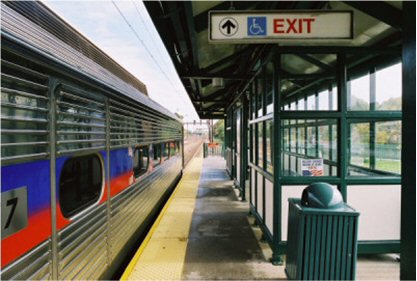
SEPTA Commuter Train - Philadelphia
When a conformity determination is not made according to schedule, areas have a 1-year grace period to make the determination before there is a conformity lapse and the use of Federal-aid funds is restricted. During a lapse, only certain types of projects can proceed: (1) projects that are exempt from conformity; (2) TCMs in approved SIPs; and (3) projects or project phases that are already authorized. The 1-year conformity lapse grace period does not apply to new nonattainment areas that must make a determination on their plans and TIPs within 12 months of final designation.
There are three groups of exempt projects in the conformity rule:
A hot-spot analysis is an assessment of the emissions impact of a project on local air quality concentrations. It helps demonstrate that the project meets Clean Air Act requirements in CO nonattainment and maintenance areas. In PM areas, hot-spot analyses are required for projects of air quality concern only.
FHWA Conformity Website: http://www.fhwa.dot.gov/environment/air_quality/conformity/
EPA Conformity Website: http://www.epa.gov/otaq/stateresources/transconf/index.htm
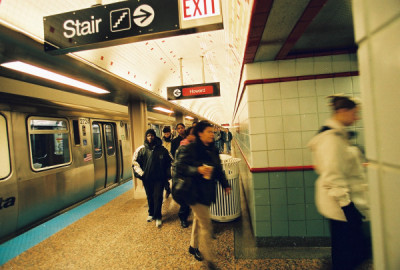
Subway - Chicago
* Please refer to the Transportation Conformity Rule and associated guidance at all times to ensure compliance with appropriate requirements.*
FHWA-HEP-10-030